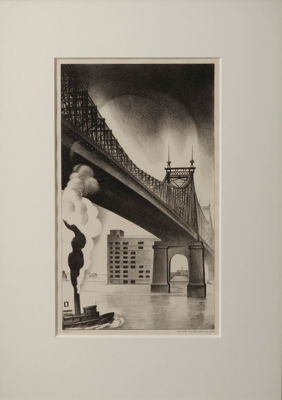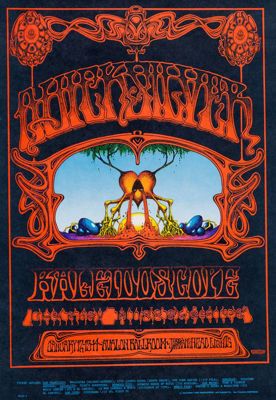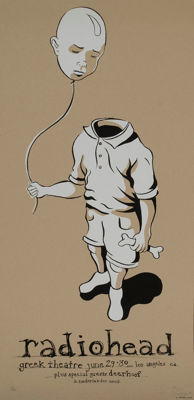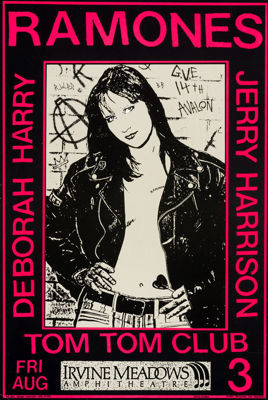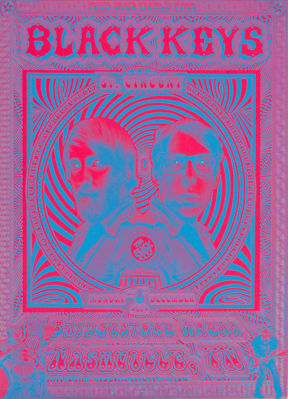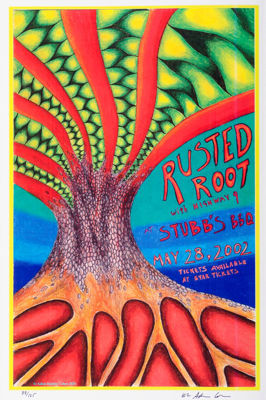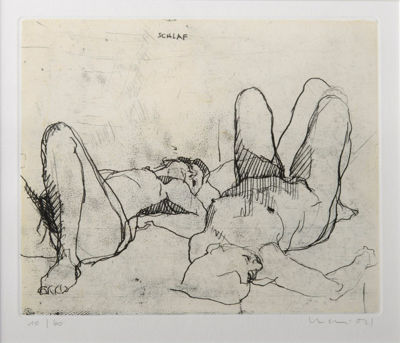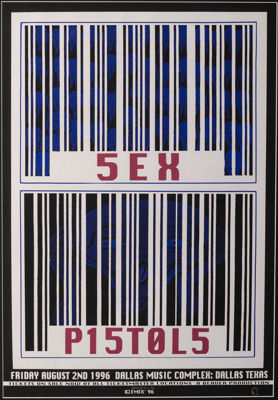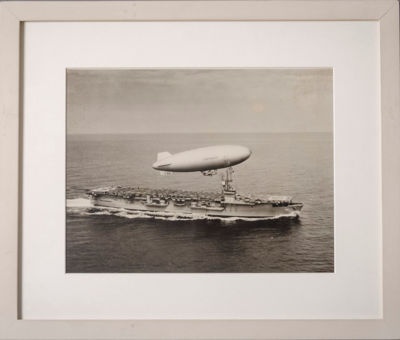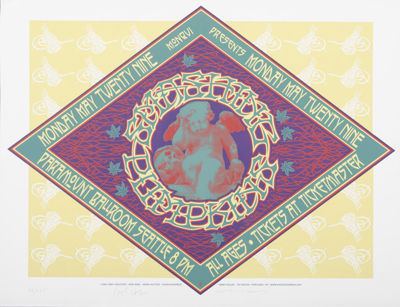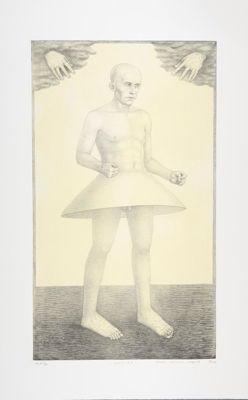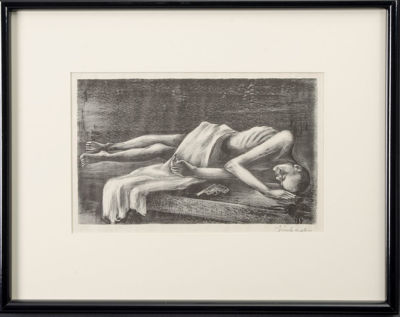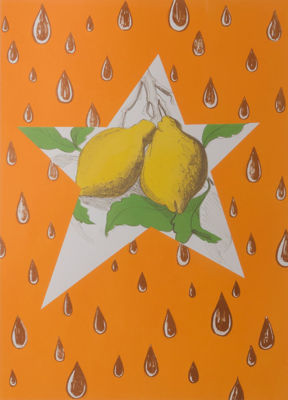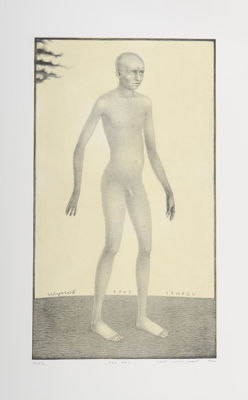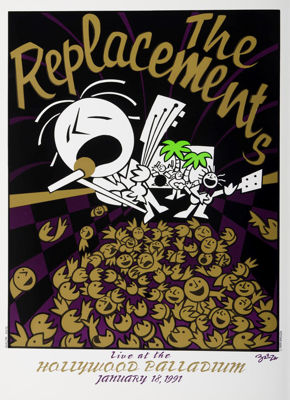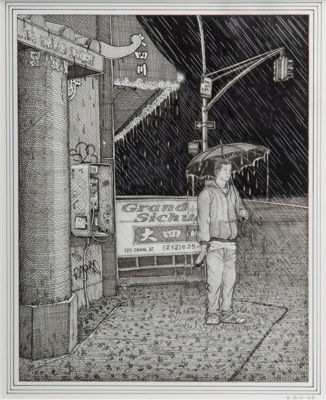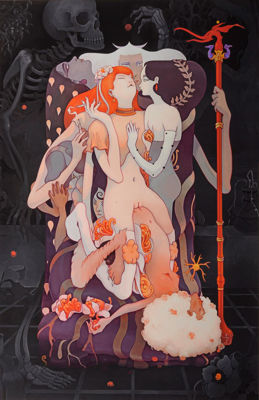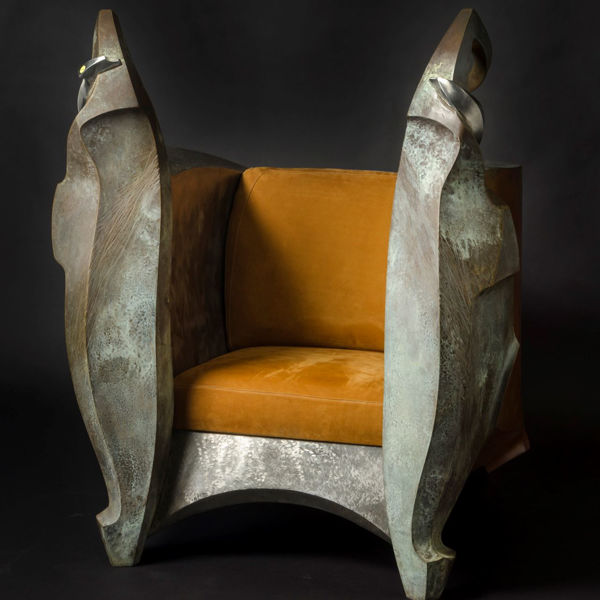Photography and Prints
Title: Queensborough bridge
Lozowick is renowned for his Precisionist style with his lithographs, influenced in part from his travels through Berlin and Moscow and associations with styles such as Russian Constructivism, Bauhaus, Futurism and De Stijl, and contact with artists such as El Lissitsky. The sharp, geometrically inclined murals focus heavily on the repeating forms and patterns of mechanised industry and the urban environment, but convey humanist principles and an ultimately optimistic view of industrial progression and the human condition within 1930s New York.
Title: Spring on Hillside
“Spring On The Hillside”s romantic landscape belies Wanda Gágs love for rural atmosphere and the natural. Influenced by a central European folkways upbringing and the lasting influence of her painter father, her diligent study of environment combines with a slow burning and subtle eroticism to give the recorded forms a deeper and more latent arrangement of meaning. The repetitive swells and undulations in the work intend to unify and harmonise, and the artist blurs her perception of rural New Jersey with her internal landscape and an idealised notion of midwestern Americana.
Title: The Apocalypse
The Apocalypse, one of the most assiduous themes of universal literature, is treated by Jose Viera through a subtle line of etchings, in which a surrealism identified with the biblical text prevails. "From the Blesseds," writes Jose Hierro, "to this Joseph Viera, the last who, for the time being, has sought inspiration in the vision of St. John, the number of those who have given plastic flesh to the Apocalypse is countless, Every artist in every age has interpreted differently words that do not change in the course of time. " The surrealist version offered by Viera, so appropriate for the extraordinary vision, is a very personal way of interpreting the tormented apocalyptic world. 12 original etchings, copy 172 of an edition of 195. All signed and numbered by the artist.
Title: The Apocalypse
The Apocalypse, one of the most assiduous themes of universal literature, is treated by Jose Viera through a subtle line of etchings, in which a surrealism identified with the biblical text prevails. "From the Blesseds," writes Jose Hierro, "to this Joseph Viera, the last who, for the time being, has sought inspiration in the vision of St. John, the number of those who have given plastic flesh to the Apocalypse is countless, Every artist in every age has interpreted differently words that do not change in the course of time. " The surrealist version offered by Viera, so appropriate for the extraordinary vision, is a very personal way of interpreting the tormented apocalyptic world. 12 original etchings, copy 172 of an edition of 195. All signed and numbered by the artist.
Title: The Apocalypse
The Apocalypse, one of the most assiduous themes of universal literature, is treated by Jose Viera through a subtle line of etchings, in which a surrealism identified with the biblical text prevails. "From the Blesseds," writes Jose Hierro, "to this Joseph Viera, the last who, for the time being, has sought inspiration in the vision of St. John, the number of those who have given plastic flesh to the Apocalypse is countless, Every artist in every age has interpreted differently words that do not change in the course of time. " The surrealist version offered by Viera, so appropriate for the extraordinary vision, is a very personal way of interpreting the tormented apocalyptic world. 12 original etchings, copy 172 of an edition of 195. All signed and numbered by the artist.
Title: Tomas
Liberating portraiture from strict representation, Sakura uses his prints to reflect on internal conflicts and fantasies, harmonising those perceptions with the image to create a portrayal that acknowledges its own subjectivity — and searches for a universal emotive language. The surrealist abstraction of “Tomas” reduces down to a repetition of mouths and lips (particularly pouting and suggestively female) and extols a wonderment that might topple into obsessiveness over this one trait — or clarifies a personality to its single, definitive point.

